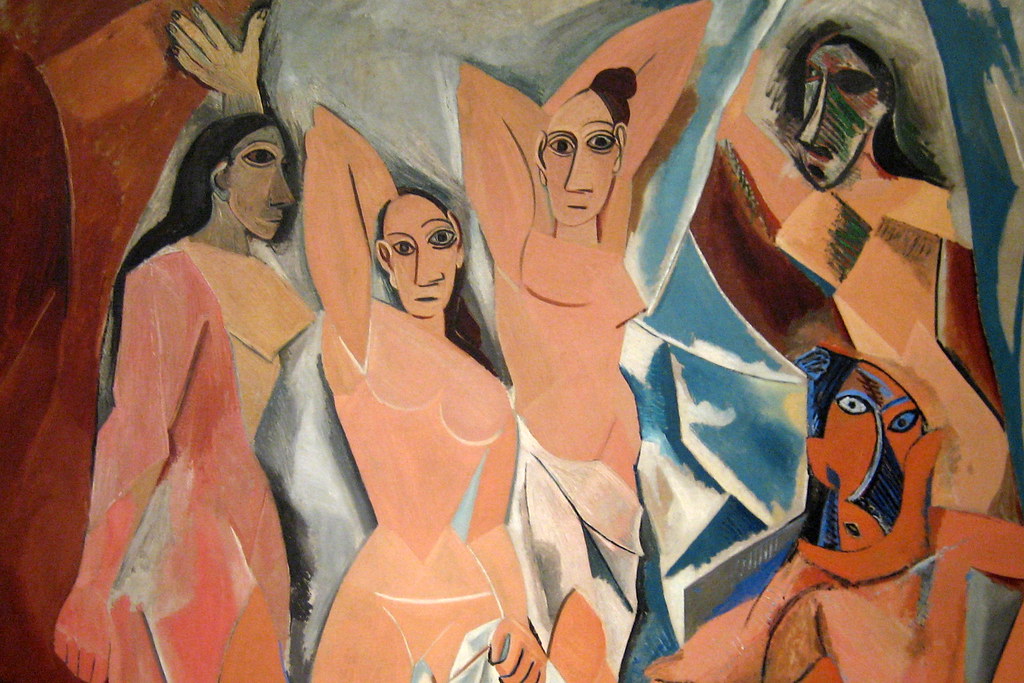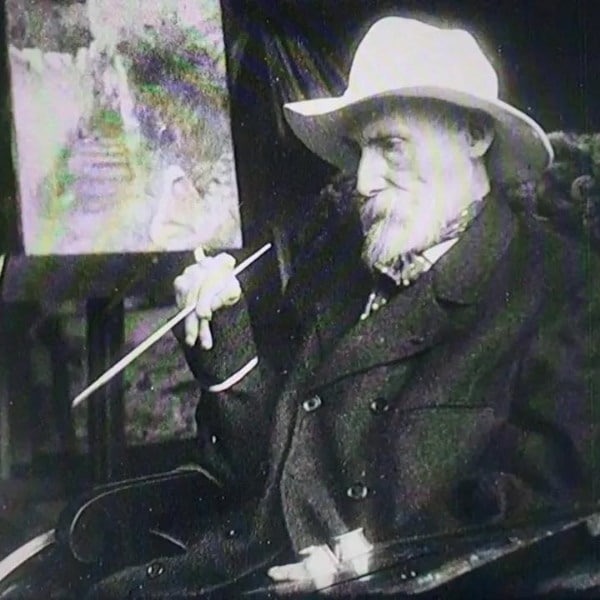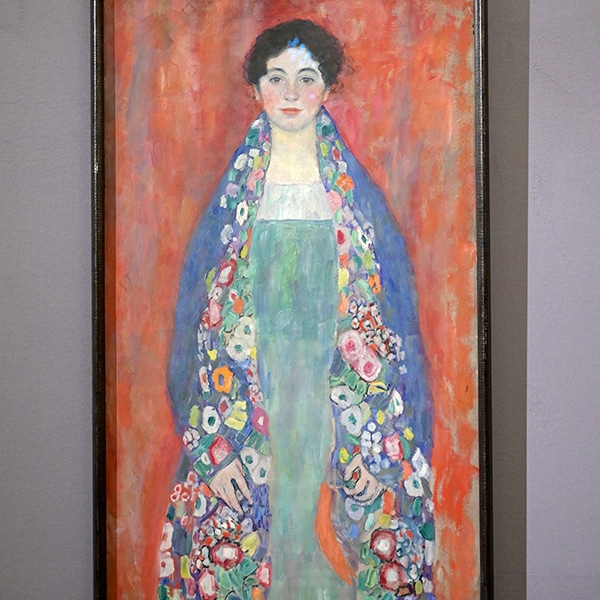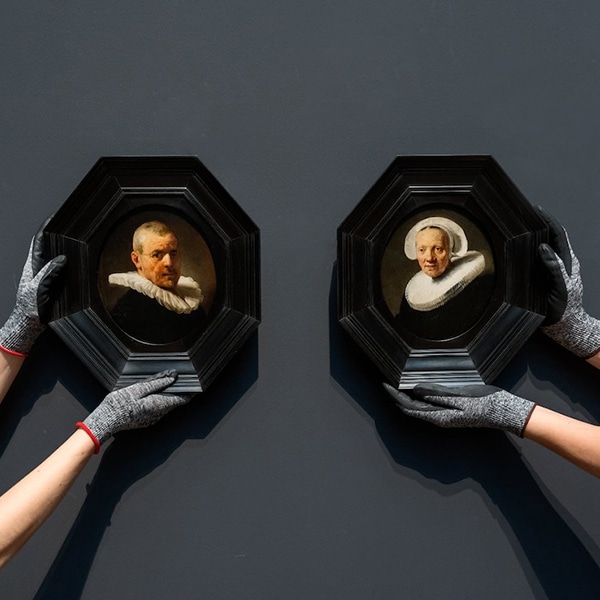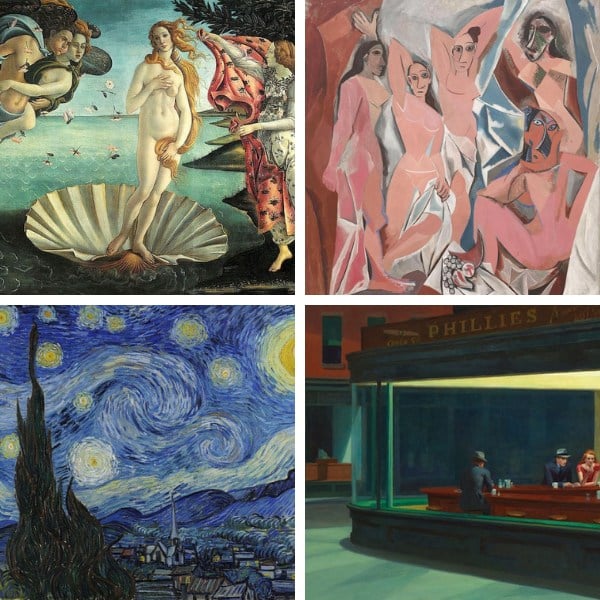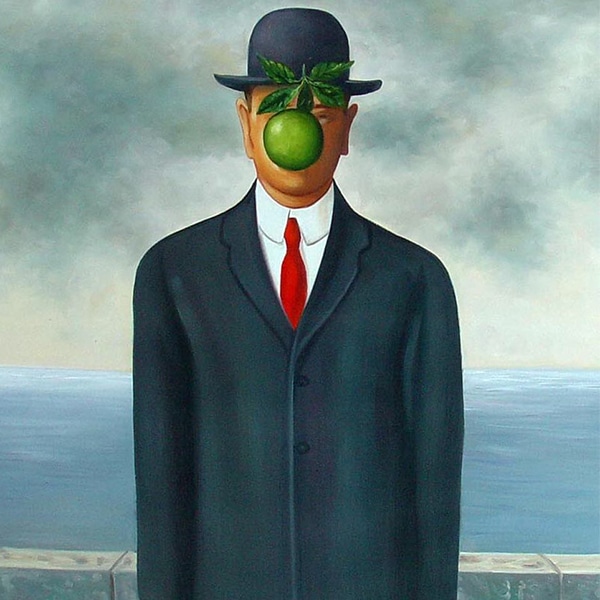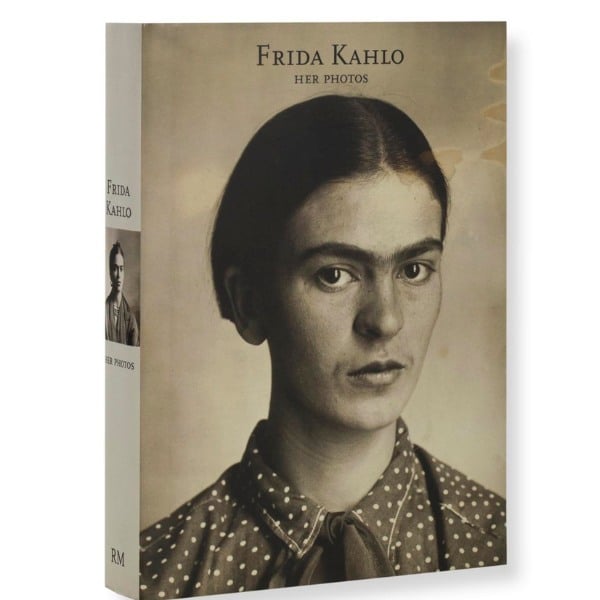African Period (1906-1909)
For the three years that followed his Rose Period, Picasso found inspiration in Oceanic and African art. Known as his African Period, this phase retained the warmth of his Rose Period but conveyed a shift in both style and subject matter. Rather than produce figurative portrayals of performers, he began to depict abstracted, African mask-inspired depictions of all sorts of figures, from prostitutes in a Barcelona brothel (Les Demoiselles d'Avignon) to the artist himself (Self-Portrait).
Picasso's fascination with the simplification and fragmentation found in “primitive” art inspired his next—and arguably most famous—phase: Cubism.
Cubism (1908-1914)
Cubism is a genre that features subject matter broken down into fractured forms. Pioneered by both Picasso and Georges Braque and renowned as one of the most important art movements, Cubism is separated into two primary phases: Analytical and Synthetic.
Analytical (1908-1912)
Analytical Cubism dominated the first four years of the movement. It is characterized by monochromatic, topsy-turvy canvases full of overlapping, geometric forms. The arrangement of these fragments form the subject, which is often unrealistically depicted from multiple angles at once.
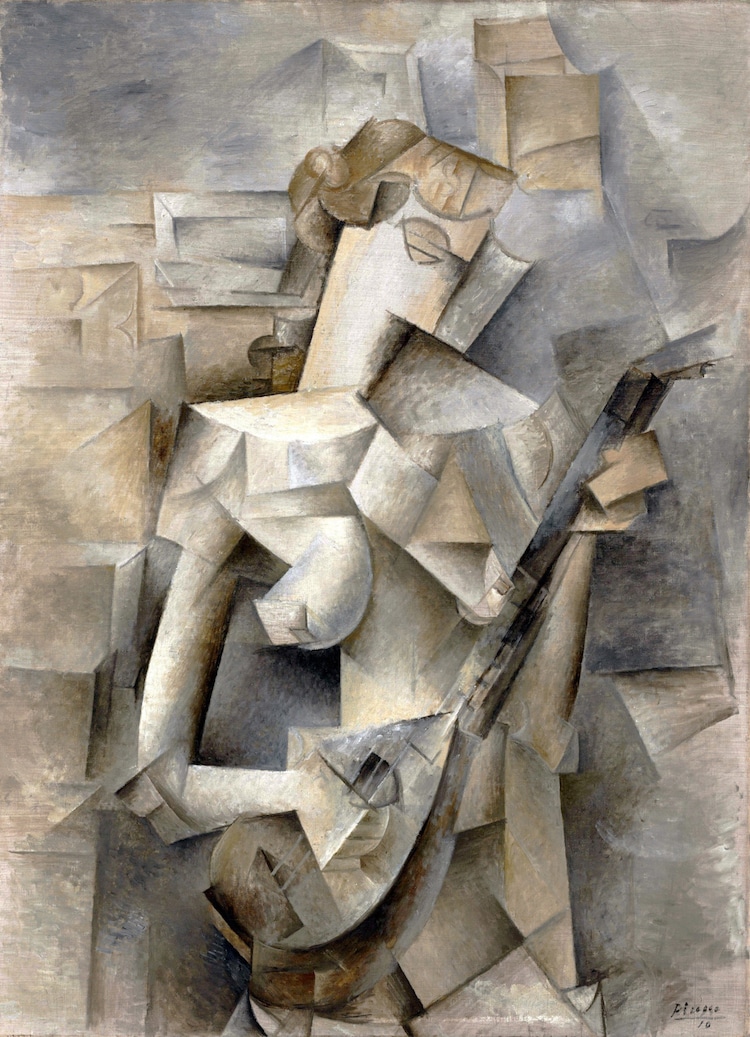
Girl with a Mandolin (1910) (Image: MoMA via Wikimedia Commons)
Synthetic (1912-1914)
Unlike Analytical Cubist works, paintings rendered in the Synthetic Cubist style were simplified, polychromatic, and inspired by collage art. Like the former phase of the movement, however, these paintings convey an interest in abstraction.

Guitar and Jug on a Table (1918) (Image via Wiki Art)
This part of the period officially lasted until 1914, though Picasso would continue to dabble in the style until the 1920s.
Neoclassicism (1917-1925)
Gradually shifting from the near-abstraction of Synthetic Cubism, Picasso adopted a Neoclassical style in 1917. This change occurred shortly after the artist's first visit to Italy, where he was inspired by the naturalism found in Italian Renaissance paintings.
Aiming to emulate these Renaissance artists, he returned to figurative painting—though, as evident in Woman Reading and The Pan Flute, they are not rendered in a style as realistically as his early works.
View this post on Instagram
Surrealism (1925-1932)
Following Neoclassicism, Picasso again moved away from naturalism. In 1925, he began working in a styled deemed Surrealist, characterized by dreamy depictions of figures with disorganized facial features and twisted bodies. This “surreal” quality is emphasized by an unnatural palette of bright tones and clashing colors, as well as a skewed sense of perspective and a contrast between organic and geometric forms.
Though Picasso is not considered a Surrealist painter, his paintings from this period made major contributions to the movement.
Late Work
After his Surrealist period and until his death in 1973, Picasso continued to paint. However, unlike his previous work, the pieces produced during this time are not categorized into certain styles, as they each incorporate different elements of his past periods. This approach culminated in an eclectic collection of paintings that both illustrate the influence of his changing style and remind viewers of his endless talent.
This article has been edited and updated.
Related Articles:
Simple Line Tattoos Inspired by Surreal Artists Like Picasso
Guggenheim Releases More Than 1,700 Masterful Works of Modern Art Online
Brightly Colored Tattoos Inspired by Picasso’s Cubism Paintings
